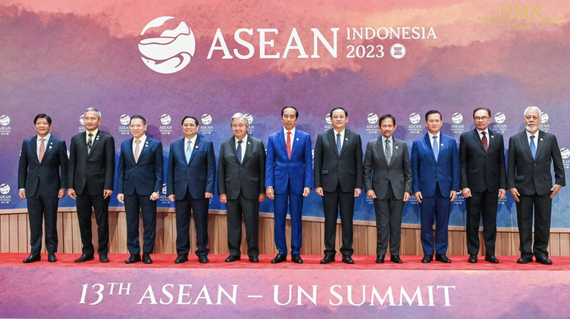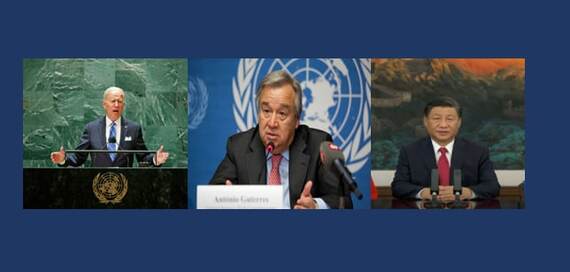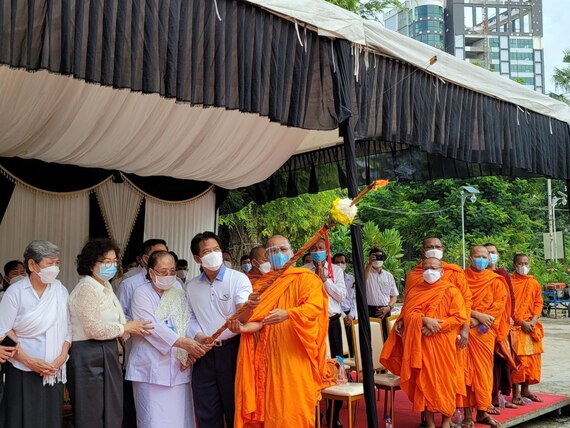The Indo-Pacific region has emerged as a crucial geopolitical theater, capturing the attention of major global powers such as the United States and China. This vast expanse, stretching from the Indian Ocean to the Pacific Ocean, is not only home to some of the world's fastest-growing economies but also serves as a strategic hub for trade and security.
Within this complex landscape, the Association of Southeast Asian Nations (ASEAN) plays a pivotal role. Comprising ten member states, ASEAN has navigated the power play between the United States and China, aiming to uphold regional stability and promote economic prosperity.
At the heart of ASEAN's approach lies a delicate balancing act, as it seeks to maintain cordial relations with both the US and China while safeguarding its own interests and asserting its regional autonomy. This balancing act is not without challenges, as the US and China engage in competition for influence, economic dominance, and strategic control in the Indo-Pacific.
The United States has been a longstanding power in the Indo-Pacific, with a strong military presence and alliances with several countries. It has traditionally championed a rules-based international order, promoting democratic values, free trade, and open navigation routes. However, in recent years, the US-China relationship has become increasingly tense, marked by strategic competition and trade disputes.
China has risen as a major global power, aiming to assert its influence in the region through its Belt and Road Initiative (BRI) and military expansion. With its economic prowess and ambitious infrastructure projects, China seeks to enhance its connectivity and establish itself as a dominant player. This has raised concerns among some countries in the region, particularly those wary of China's intentions and its growing assertiveness in territorial disputes.
ASEAN, as a regional organization, finds itself in a delicate balancing act between these two powers. Member states recognize the importance of maintaining good relations with both the US and China, as they navigate their own economic and security interests. ASEAN's approach is often characterized by engaging both powers, promoting dialogue, and advocating for a peaceful resolution to conflicts.
ASEAN countries often face pressure to choose sides or may find themselves caught in between the competing interests of the US and China. It is essential for ASEAN to maintain its unity and collective voice, ensuring that the regional bloc's interests are protected and its autonomy is upheld.
ASEAN's relationship with the United States dates back to the early days of its establishment in 1967. The US has been a key player in the region, providing security assurances, economic aid, and political support to ASEAN member states. This relationship has been characterized by a shared commitment to democracy, human rights, and the rule of law.
However, the rise of China as a global economic powerhouse has significantly altered the regional dynamics. China's increasing influence and assertiveness in the Indo-Pacific region have prompted ASEAN to recalibrate its position. The historical ties between ASEAN and China can be traced back to ancient times, but it was in the 1990s that the relationship truly gained momentum.
ASEAN's approach to maintaining this delicate balance is rooted in its longstanding principle of neutrality and non-alignment. The association has consistently emphasized the importance of maintaining regional peace, stability, and security through peaceful dialogue, cooperation, and adherence to international law. This approach allows ASEAN to engage with both the US and China without aligning itself too closely with either side.
One of the key strategies employed by ASEAN is multilateralism. The association encourages dialogue and cooperation among its member states and external partners through platforms such as the ASEAN Regional Forum (ARF) and the East Asia Summit (EAS). These forums provide opportunities for ASEAN countries to engage in open discussions, promote trust-building measures, and address regional challenges collectively. By fostering a multilateral environment, ASEAN aims to prevent any one power from dominating the region and promote a more inclusive and balanced approach to regional affairs.
The key principle of ASEAN centrality is the belief in the centrality of ASEAN in shaping regional processes and maintaining a balance of power. This principle acknowledges the importance of ASEAN as the main driver of regional integration and cooperation. ASEAN centrality ensures that ASEAN remains at the forefront of regional discussions and decision-making processes.
ASEAN has long been committed to maintaining a rules-based international order, advocating for the peaceful resolution of conflicts, and promoting economic cooperation among its member states. However, the increasing rivalry between the US and China poses challenges to ASEAN's ability to navigate this complex geopolitical landscape.
The future of ASEAN's balancing act lies in its ability to maintain its unity and coherence as a regional organization, while also engaging both the US and China in constructive dialogue. ASEAN's centrality and neutrality will be crucial in mediating disputes and facilitating cooperation between major powers.
ASEAN's commitment to multilateralism and the principles of the ASEAN Way has proven instrumental in shaping the power dynamics in the region. Through platforms such as the ASEAN Regional Forum (ARF) and the East Asia Summit (EAS), ASEAN serves as a forum for dialogue and collaboration among regional powers, fostering trust-building and conflict resolution. ASEAN's emphasis on inclusivity and consensus-building has enabled smaller nations within the region to have a voice and actively participate in shaping the regional power play. This ensures that the interests and concerns of all member states are taken into account, preventing any single dominant power from exerting excessive influence.
—————-
Dr. Seun Sam is a policy analyst of the Royal Academy of Cambodia.
RAC media






